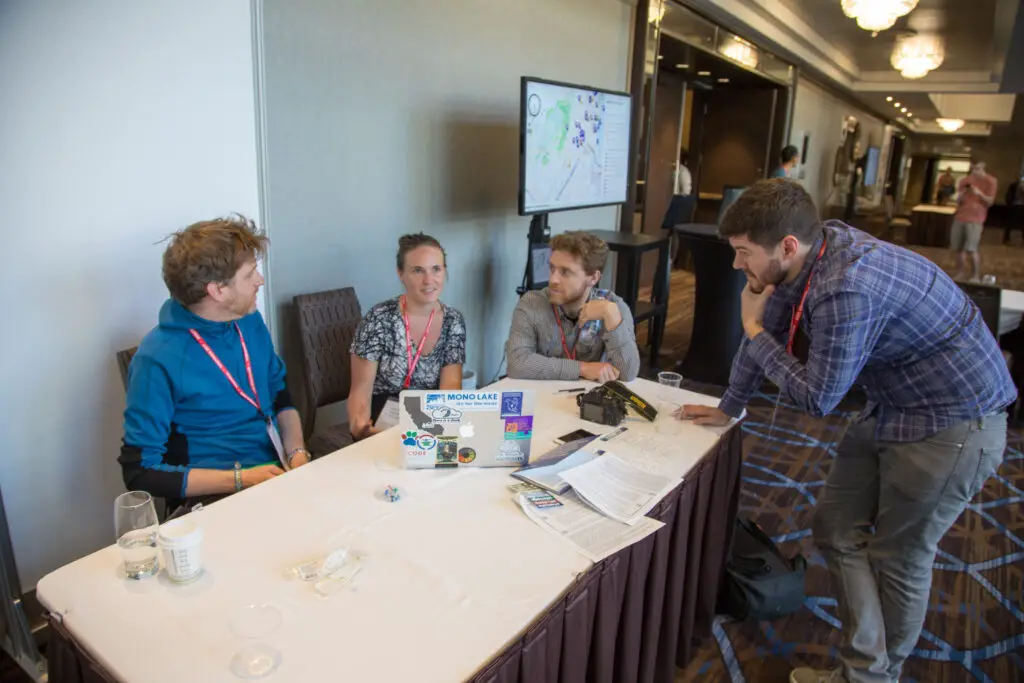You know those tiny things you do every day without thinking—like checking your phone before you even open both eyes, sipping that 3 PM iced latte, or saying “just one more episode” for the third time in a row? Yeah… turns out those little habits are quietly rewiring your brain. Some for the better, some for the yikes.
Welcome to the chaotic magic of neuroplasticity: your brain’s ability to constantly adapt and reshape itself based on your daily routines. Which is kind of amazing—until you realize that binge-watching true crime till 2 AM or never drinking actual water might be aging your brain faster than a group chat after 30. But hey, don’t panic! Awareness is half the battle (the other half is not ignoring this list).
Here are 14 sneaky daily habits that are literally changing your brain—some turning you into a sharper, more resilient version of yourself… and others, well, slowly turning your prefrontal cortex into a melted Popsicle. Let’s unpack the good, the bad, and the brain-foggy.
1. Binge-Watching Late at Night

There’s nothing quite like the siren call of “just one more episode” at 2 AM—but that all-nighter does more than steal your beauty sleep. It disrupts your circadian rhythm, scuttling production of melatonin and messing with the hippocampus’s overnight memory-consolidation party. Over weeks and months, chronic sleep loss can shrink hippocampal volume, impairing both learning and emotional regulation. As noted by WebMD, people who routinely get under six hours of sleep show measurable declines in short-term memory and increased anxiety levels.
Still, the allure of cliffhangers is strong. Your best play? Set a hard “lights out” time—even if you’re glued to a thriller. Use night-time screen filters, establish a wind-down ritual (think herbal tea and light reading), and make your bedroom a tech-free oasis. Gradually, your brain will relearn that calm, dark environment equals rest and repair—boosting synaptic pruning and strengthening resilience against age-related cognitive decline.
2. Scrolling Social Feeds First Thing in the Morning

When your eyes pop open and the first thing you do is reach for your phone, you’re priming your brain for a dopamine roller coaster. That instant hit of “likes” and fresh gossip sparks reward circuits in the nucleus accumbens, giving you a mini high before you’ve even sat up in bed. Over time, this can heighten sensitivity to instant gratification, making it harder to settle into tasks that require sustained focus—like, say, that 9 AM Zoom call. According to NPR, excessive early-morning scrolling may rewire reward pathways to crave ever-quicker hits of novelty, at the expense of deeper concentration.
But it’s not all doom-scroll: you can retrain your brain by swapping that first swipe for a few minutes of deep breathing or journaling. That gives your prefrontal cortex a chance to boot up on its own terms, strengthening neural networks for self-regulation. Try setting a “phone curfew” alarm or placing your device across the room so you actually have to get up to nab it. With consistency, you’ll notice your morning mindset shifting from jittery “What happened overnight?” to calm “What do I want to happen today?”
3. Skipping Daily Physical Activity

Let’s be real: dragging yourself off the couch for a jog or even a brisk walk feels like a Herculean feat sometimes. But when we skip movement, we starve our brain of BDNF (brain-derived neurotrophic factor), the superstar protein that promotes neuron growth and connectivity in areas like the prefrontal cortex. Without enough BDNF, neural pathways weaken, slowing processing speed and dulling executive functions (like planning, decision-making, and mental flexibility). A study highlighted by Harvard Health found that even moderate exercise—30 minutes of walking, three times a week—boosts BDNF levels enough to enhance memory and mood.
No need to train for a marathon—dance breaks in your living room, walking meetings, or weekend hikes count, too. The key is consistency: daily micro-workouts that get your blood—and neurotrophic factors—flowing. Over time, you’ll carve deeper, more resilient neural grooves, fend off age-related decline, and probably have way more fun than you’d expect.
4. Constant Multitasking on the Job

If you pride yourself on juggling ten browser tabs, three chat threads, and a long-form report all at once, your brain is paying the price. True multitasking is a myth—your prefrontal cortex is actually switching rapidly between tasks, incurring a cognitive “tax” each time it flips contexts. This depletes working memory and lowers overall efficiency, while chronic context-switching has been linked to reduced gray-matter density in attention-related brain regions. Per Forbes, habitual multitaskers can see up to a 40% dip in performance on both individual tasks and long-term memory retention.
Want to rewire back toward single-task mastery? Try time-blocking: allocate dedicated chunks for emails, design work, and problem-solving, and turn off notifications during “focus sprints.” Even simple toggles like “Do Not Disturb” and app-limiting tools can help your brain settle into a flow state—strengthening neural circuits for sustained attention and unclogging mental bandwidth for creative problem-solving.
5. Relying on GPS for Every Turn

Sure, GPS navigation is handy—but outsourcing wayfinding to your phone means you’re skipping out on a powerful mental workout. Navigating with maps and landmarks engages the hippocampus and entorhinal cortex, reinforcing spatial memory and cognitive mapping skills that tend to atrophy with age. According to a feature in the Washington Post, people who use traditional wayfinding instead of GPS show greater hippocampal volume and better memory performance in later life.
You don’t have to ditch your phone entirely—just give your brain a chance to steer sometimes. Try memorizing simple routes, following paper maps for weekend road trips, or turning off voice-directions until you need them. Little adjustments like these keep those spatial-navigation neurons firing, building cognitive reserve that can buffer against age-related memory loss.
6. Doom-scrolling News Updates

Ever catch yourself compulsively refreshing headlines? That cortisol surge might feel empowering—like you’re on top of everything—but prolonged stress signaling elevates glucocorticoids that can damage the hippocampus over time. Plus, negativity bias means the bleaker the news, the more your amygdala lights up, reinforcing anxiety loops.
Next time you feel the pull to refresh, try batching your news checks into two or three set times per day—and stick to reputable summaries rather than endless feeds. Swap that midday scroll for a quick walk or a playlist of your favorite feel-good tunes. Over time, you’ll train your stress response to chill out, giving your hippocampus a break and your mood a major boost.
7. Overdoing Caffeine Late in the Day

A double-shot latte after lunch might keep you alert, but late-day caffeine can sneak into your sleep window, fragmenting deep-sleep stages crucial for memory consolidation. Chronic disruption here chips away at synaptic health and may accelerate age-related cognitive decline.
To break the cycle, set a caffeine “last call” around 2 PM—then switch to herbal tea or decaf if you need a pick-me-up. Establish a soothing pre-bed ritual (think light stretching, a warm bath, or reading a physical book) to cue your brain that it’s downtime. Within a few weeks, your sleep quality will rebound, and your neurons will thank you for the extra repair time.
8. Not Challenging Your Brain with Novelty

Routines are comfy, but mental autopilot means fewer new neural connections. Novel puzzles, languages, or creative hobbies force your brain to build fresh synapses, boosting neuroplasticity.
Pick one small new challenge each week—learn a few phrases in a foreign language, master a new recipe, or tackle a different genre of book. When you push past your comfort zone, your brain flexes its adaptability muscles, forging pathways that sharpen memory and problem-solving. Before long, you’ll be craving novelty instead of coasting on autopilot.
9. Excessive Passive Entertainment

Binging reality shows or doom-scrolling TikTok passively floods your brain with low-effort dopamine hits, crowding out time that could be spent on active learning or socializing—both key to maintaining gray-matter volume.
Balance out those Netflix marathons with interactive activities: join a book club, take up a simple DIY project, or host a game night with friends. Engaging your mind and social brain simultaneously deepens connections—both personal and neural—and wards off the “zombie-screen” effect. You’ll end the binge session feeling mentally enriched rather than mentally drained.
10. Skipping Social Interactions

Humans are wired for connection. Lack of meaningful conversation and social play can shrink cortical regions involved in empathy and executive function—accelerating cognitive aging.
Make it a point to schedule regular catch-ups, whether it’s a virtual coffee with an old friend or a neighborhood stroll with a buddy. Even a quick five-minute call sparks the release of oxytocin, which soothes stress and strengthens those social-brain circuits. Over time, those small moments add up, building a robust “social reserve” that keeps your mind lively and resilient.
11. Ignoring Hydration

Even mild dehydration impairs attention, short-term memory, and processing speed. Over time, chronically low water intake can set off microvascular changes that affect brain health.
Carry a refillable water bottle as a low-effort reminder to sip throughout the day—aim for a glass every couple of hours. You can jazz it up with fruit slices or a splash of citrus to make it more appealing. Staying hydrated optimizes neurotransmitter function and nutrient delivery, leaving you sharper and more focused.
12. Eating Ultra-Processed Foods Daily

Diets high in sugar and additives trigger systemic inflammation and oxidative stress, which can cross the blood-brain barrier and harm neurons—linked to faster cognitive decline in aging adults.
Swap out one processed snack a day for something whole and unprocessed: nuts, fresh fruit, or yogurt with berries. Gradually shift your meals toward more colorful veggies, lean proteins, and healthy fats. As inflammation markers drop, you’ll notice mental fog lifting and energy levels stabilizing—your brain will literally run on cleaner fuel.
13. Blasting Loud Music for Hours

Your auditory cortex can adapt to overstimulation by down-regulating sensitivity. Chronic loud noise exposure also elevates stress hormones, which—over the long haul—can rewire circuitry in emotion-regulation centers.
If you love high-volume beats, give your ears regular “quiet breaks” by dropping the volume or using noise-cancelling headphones in loud environments. Try scheduling a daily 10-minute sound bath of complete silence or gentle ambient sounds. Those small respites protect your hearing and let your stress response reset—keeping your brain’s sound processors in top shape.
14. Skipping Routine Health Check-Ups

Neglecting blood pressure, cholesterol, and blood-sugar screenings lets vascular and metabolic issues go unchecked. Microstrokes and insulin resistance silently degrade white-matter integrity, undermining communication between brain regions.
Treat your annual wellness visit like a brain-care date: get the recommended labs and discuss any concerns with your provider. Early detection of hypertension or prediabetes means you can intervene with lifestyle tweaks or medication before the damage piles up. Consistent monitoring builds a safety net that keeps your neural highways clear and firing smoothly.
